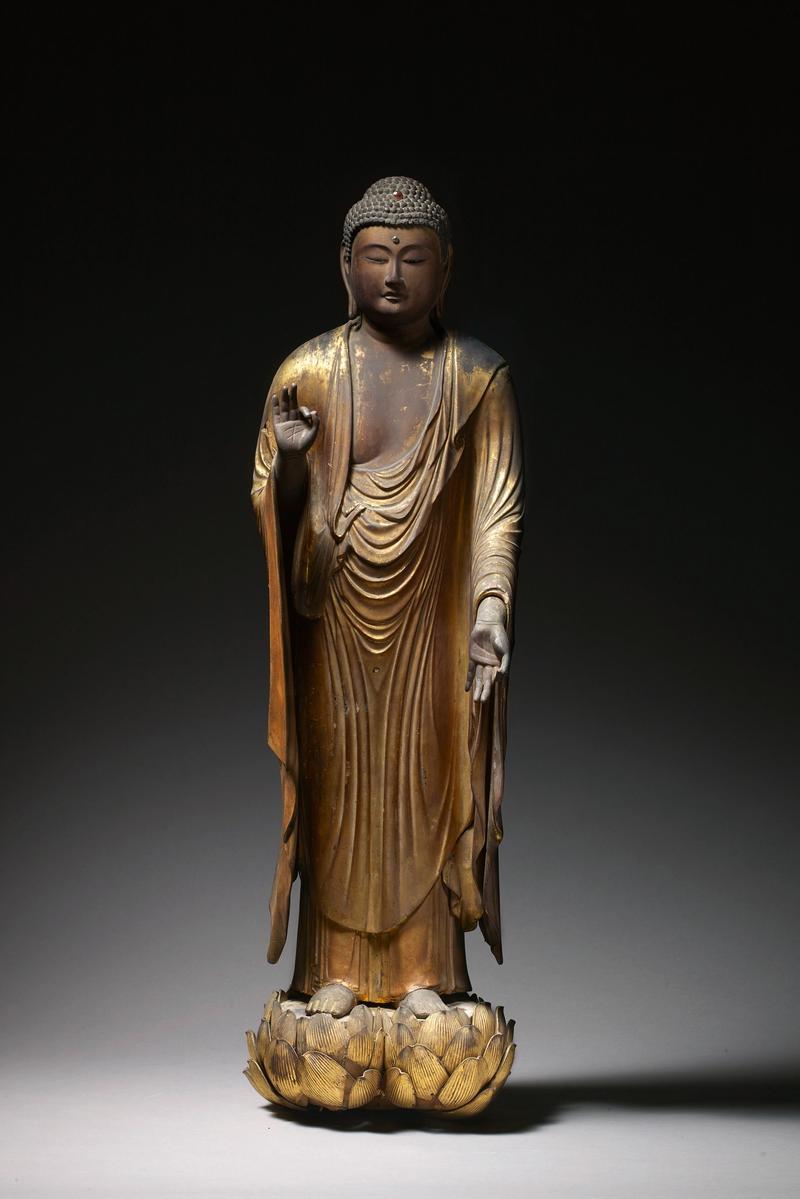A large Negoro lacquer Heishi (ritual sake bottle).
Japan, 18th/19th century, Edo period.
These ritual vessels, normally made in pairs, were placed at the altars of Shinto shrines and used to make offerings of sake to the gods. Heishi are constructed of three parts: the spout, shoulder and mid body, lower body and foot. All three parts are then assembled and turned on a lathe. Subsequently the bottle is given multiple coats of black lacquer before being finished entirely in red omitting the foot.
The main characteristic of Negoro lacquer is its simplicity which exemplifies one aspect of Japanese aesthetics. The robust wood base is durable and practical, and is first coated with black lacquer and then with red or vermilion. Over time and constant use the red lacquer wears away to reveal the black ground beneath, producing the elegant surface characteristic of Negoro. Such rubbing, cracks and chips on Negoro from use and age, something usually regarded as imperfection in other parts of the world, have been admired and appreciated in Japan for centuries. Practical, durable and with sophisticated simplicity, Negoro lacquerware has been favoured by temples and shrines as well as aristocrats, before being sought after by tea masters from the 17th century.
Negoro lacquer is traditionally associated with the Negoro-ji Temple complex in Wakayama prefecture which was founded in the 12th century by monks of the Shingon Buddhist sect. Originally Negoro lacquerware was produced in the studios in and around the temple complex for ritual and festival use as well as in everyday life by monks and laypeople. Negoro-ji grew enormously in power and wealth during the 15th and 16th centuries. As belief in Buddhism spread and the temples expanded with sub-temples and guesthouses, the Negoro-ji complex became unprecedentedly large and is said to have once consisted of more than two thousand temples and accommodated thousands of priests. To meet the enormous demand of utensils for the increasing number of priests and followers gathered at the temples, lacquerware was produced in a systematic and productive way by a number of skilled craftsmen in Negoro for centuries. Renowned for its quality Negoro lacquer was also much in demand outside the complex.
The warrior monks of Negoro-ji played a major part in the civil wars of the time before being crushed by the warlord Toyotomi Hideyoshi (1537-1598) who almost entirely destroyed the complex in 1585. The lacquer craftsmen of the area fled to other parts of Japan thus preserving the lacquer techniques of Negoro.
Various types of utensils were used on a daily basis for rituals, priests’ mealtimes and when followers were served after Buddhist services. The vibrant colours of Negoro lacquer vessels and utensils carefully kept for generations suggest the prosperity and activity that the temples such as Negoro-ji must have enjoyed in those days. Some of these utensils bear marks or characters on base to identify their owners.
Buddhist Art

A negoro lacquer Heishi

A kakemono with the monk Hōnen

A kakebotoke

Zenkoji Kannon Bosatsu

Buddhist wood panels

A wood figure of Amida Nyorai, Heian/Kamakura period

Kakebotoke of Bishamonten

Dainichi Nyorai

A zushi with Jizō Bosatsu

Amida Buddha

Daiarakan (Sacred Arhat)

Jizō Bosatsu

Amida Buddha

A silk kakemono with Kannon

An iron nyoi

Zushi with Kannon

A bronze kakebotoke of Kannon





